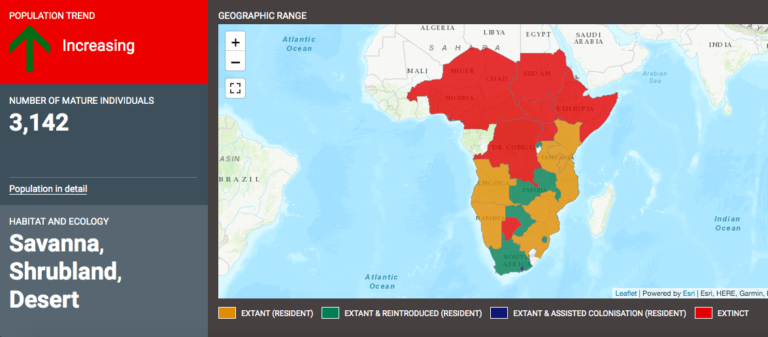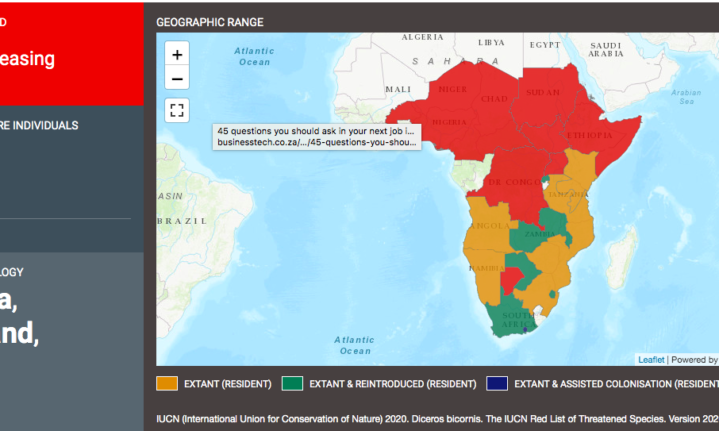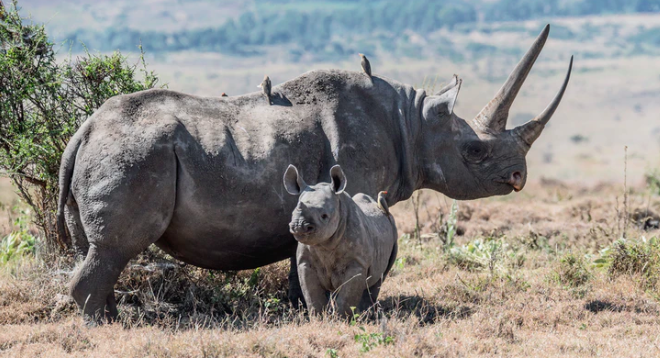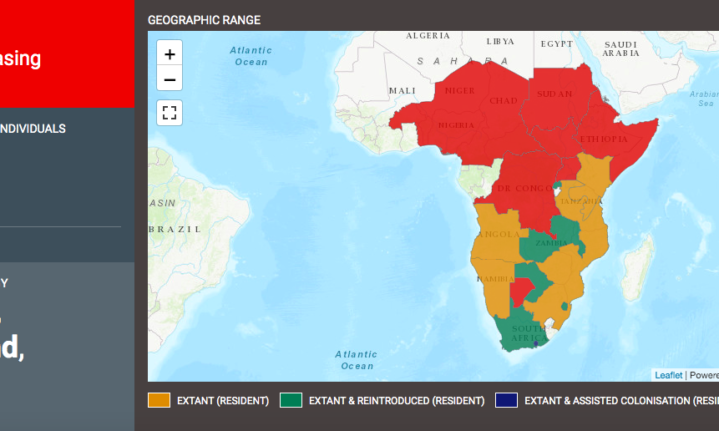In 2003 WWF launched the Black Rhino Extension Project (BREP) to protect this vulnerable species, by creating black rhino populations in safe areas across South Africa. By translocating these animals out of dangerous zones, where they would be vulnerable to poaching, the project has recorded a slow but steady increase in the black rhino population in South Africa.
In August 2019 in the Eastern Cape, BREP partnered with private landowners, a community and the provincial government, to create a 14,000-hectare reserve. The reserve has since been declared a protected area. This was the 12th successful translocation and marked the 200th rhino moved into a safe area.
WWF pioneers the partnerships with landowners who have a healthy black rhino habitat that can sustain a breeding population. Neighbouring landowners are also getting involved by removing internal fences.
BREP will then organise and coordinate the translocation of the rhinos. This process can involve upwards of 20 rhinos at a time to the new sites. ‘Managing for rapid population growth is an important element of conservation of critically endangered species,’ says the BREP website.
The International Union for Conservation of Nature (IUCN) has the black rhino listed as ‘critically endangered’ but stipulates that the population trend is increasing.

Image: IUCN
According to Good Things Guy, in 2019, BREP’s black rhino sites reached a 5% annual growth target. This was set by local conservation authorities.
The areas where the rhinos were removed have also seen an increase in the black rhino population that remained. The effect of removing an animal from an area that has almost reached full carrying capacity, will allow the population of that animal to regrow.
Dr Jacques Flamand, the leader of the project, spoke to Good Things Guy and said: ‘It’s great to see nearly two decades of hard work on behalf of black rhino paying off. Our sites now have 256 black rhino on them. And they have been busy. We had seven calves, born on four different sites, over the Christmas period. We’ve had a year of good rain so far in most of our reserves. We hope this leads to even more calves next year.’
He continued, ‘But there is still much to do and much of it involves BREP finding suitable large blocks of land for black rhino, and owners of that land prepared to devote it to black rhino conservation, a risky and costly endeavour. This will be an ongoing challenge, particularly as wildlife tourism has been hard hit by the global coronavirus pandemic.’
According to WWF, there are around 5,500 black rhinos dispersed across Africa. Around 2,000 of these are found in South Africa. The slow and steady increase is a huge win for the conservation efforts to protect this species for future generations.
Highlights of the work done by BREP:
– Since 2003 the project has successfully created 13 new black rhino populations in South Africa.
– 218 black rhino have been moved to these project sites.
– There are more than 100 surviving calves on project sites to date.
– Project sites cover more than 310,000 hectares in South Africa.
– Six of the 13 sites have community involvement.
– Black rhino are a flagship species. Because of BRREP’s work, many landowners have consolidated smaller pieces of habitat into more ecologically viable blocks. Other critically endangered species which need large areas of land include wild dogs, vultures and cheetah, which also benefit.
Image: Unsplash


















